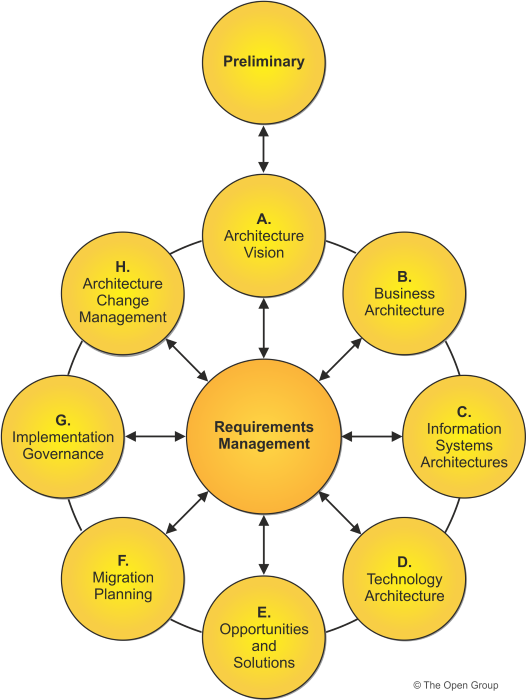|
The TOGAF Architecture Development Method (ADM) is a framework for developing and implementing Enterprise Architecture. It provides a structured approach for organizations to design, plan, implement, and manage their enterprise architecture, ensuring that it aligns with the organization's goals and objectives. The ADM consists of nine phases, each with a specific focus and set of tasks. These phases range from establishing the overall vision and goals for the architecture, to implementing and managing the architecture over time. By following the ADM, organizations can ensure that their architecture is comprehensive, effective, and adaptable to changing business needs. The nine phases of the ADM are shown in the figure above and we'll take a closer look at each of these.
Overall, the ADM provides a structured and iterative approach to developing and implementing enterprise architecture, with a focus on alignment with business goals and objectives. The Benefits and Challenges of the ADM The TOGAF Architecture Development Method (ADM) provides several benefits for organizations that are looking to develop and implement effective Enterprise Architecture. However, there are also some challenges that organizations may face when using the ADM. Here are some of the key benefits and challenges of the TOGAF ADM. Benefits
Challenges
In conclusion, the TOGAF ADM provides a structured and systematic approach for developing and implementing Enterprise Architecture. While there are challenges associated with using the ADM, the benefits of this approach outweigh the challenges for many organizations, leading to more effective and successful enterprise architecture.
0 Comments
Leave a Reply. |
AuthorTim Hardwick is a Strategy & Transformation Consultant specialising in Technology Strategy & Enterprise Architecture Archives
March 2025
Categories
All
|


